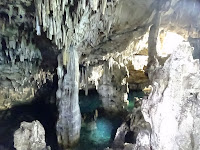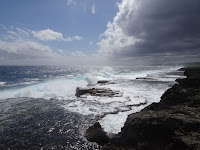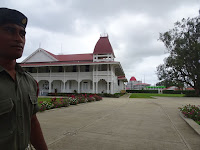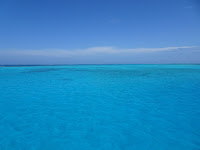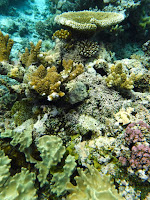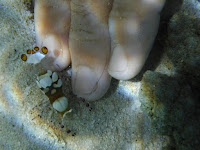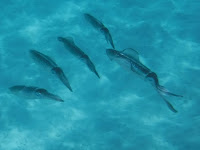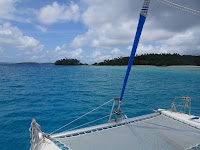Once we were outside in the deep ocean, we unrolled the jib to two reefs and had a nice, fast sail along Tongatapu’s northwest coast in the protection of its lee.
As we approached the island’s westernmost point, everything started to change. The big swell moving past the blowholes along that coast wrapped around the corner and slammed into Duff Reef just as a smaller swell hit from the other direction. These waves would curl over and slam headfirst into one another, exploding majestically into jets of water thrown straight up twice the height of our mast. The high winds would then catch all of this water and disperse it towards us in a fine mist as gentle as a morning fog by the time it reached us a mile later. The reflected swell from these impacts bounced every which way back into the sea, turning it into a sloppy mess of waves of random heights from random directions that increased in ferocity with each passing minute. The drag cut our speed in half. It was a good thirty minutes before the swell organized itself into one direction and we were able to go fast again through a beam sea that rolled us just a little too far and a little too quick to be able to trust our footing or to sleep peacefully.
Two days later, we arrived at South Minerva reef. As we sailed into its lee, we were glad to finally get some relief from the tedious and annoying swell.







